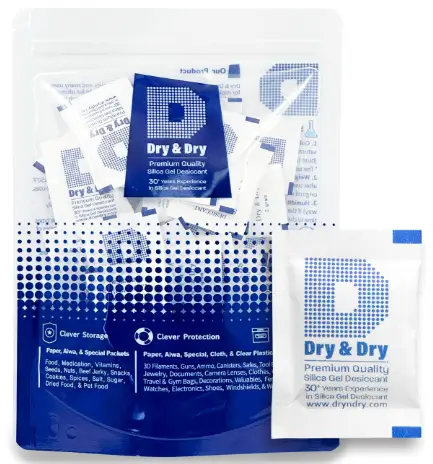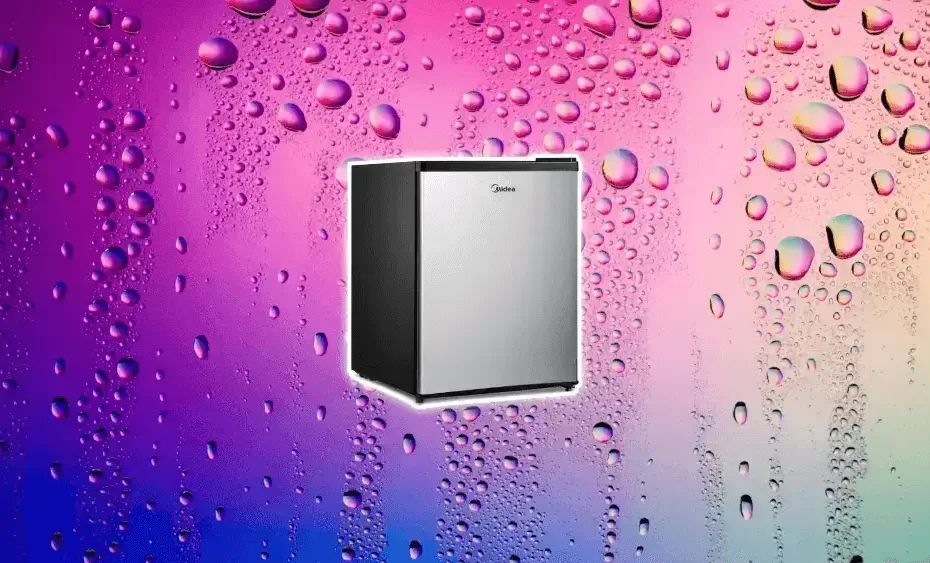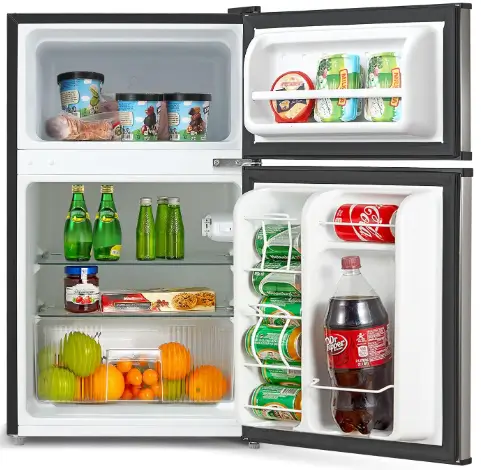Is your mini fridge getting a little too steamy for comfort? Don’t fret as there are many ways to prevent mini fridge condensation and get rid of it. It can actually be managed with a few easy and effective strategies. In this guide, we’ll walk you through practical steps to keep that unwanted moisture at bay. Say goodbye to soggy food packages and hello to a dry and well-preserved fridge!
But What is Condensation?

Condensation is a natural phenomenon that occurs when water vapor in the air transforms into liquid droplets as it comes into contact with a cooler surface. This process is driven by temperature differences between the air and the surface. When warm, humid air encounters a colder object or surface, its moisture content condenses and forms tiny water droplets. This is the same principle behind droplets forming on the outside of a cold beverage glass on a warm day.
In the context of a mini fridge, condensation can occur when the interior temperature is cooler than the surrounding air. As the air inside the fridge cools down, it releases moisture in the form of condensation on various surfaces, including shelves, walls, and even stored food items. Excessive condensation can lead to problems such as mold growth, unpleasant odors, and potential spoilage of food.
Understanding condensation is crucial for effectively managing humidity levels and maintaining the optimal environment within your mini fridge. By implementing strategies to prevent and minimize condensation, you can ensure the longevity of your appliance, enhance food preservation, and create a more comfortable and efficient storage space.
Step 1: Check the Seals
The rubber seals around your mini fridge’s door play a crucial role in maintaining the right humidity levels. If they’re damaged they can lead to excess moisture getting in.
The seals around your mini fridge’s door might seem like a small detail, but they play a pivotal role in maintaining the optimal humidity levels inside. They create an airtight barrier between the interior of the fridge and the outside environment. Their primary function is to keep the cold air in and the warm, humid air out. Make sure they’re intact and free from cracks.
How to Maintain Healthy Mini Fridge Seals
To prevent excess moisture and maintain the right humidity levels in your mini fridge:
- Regularly inspect the rubber seals for any signs of damage, such as cracks, tears, or stiffness.
- Clean the seals with a mild detergent and warm water to remove dirt and debris that might affect their functionality.
- Avoid overloading the door shelves, which can place strain on the seals and cause them to warp over time.
- Gently close the fridge door to avoid slamming it, which can contribute to seal wear and tear.
- If you notice any damage, promptly replace the seals to ensure proper insulation and humidity control.
Step 2: Mind the Temperature
Find the temperature sweet spot for your mini fridge. Too cold, and you might get excess condensation. Too warm, and your food might not stay fresh. Aim for a temperature setting that’s slightly cooler than room temperature. Finding the ideal temperature setting for your mini fridge is a balancing act that directly impacts both the prevention of condensation and the freshness of your stored items. The sweet spot lies in striking a balance between being too cold and too warm.
In addition to optimal humidity control and food freshness, maintaining your mini fridge at the right temperature offers an array of benefits. This careful temperature selection prevents energy wastage, reduces the chances of food spoilage, and keeps flavors intact.
It also curtails the growth of bacteria and mold, which can lead to a safer and healthier food environment. By fine-tuning your mini fridge’s temperature to a level slightly cooler than room temperature, you’re not only preserving your groceries but also enhancing energy efficiency, minimizing waste, and promoting a hygienic storage space for a wide range of items.
Step 3: Store Food Properly
Moisture-holding foods, such as fruits and vegetables, can indeed be culprits in the formation of condensation within your mini fridge. When these items release moisture as part of their natural process, it can contribute to the overall humidity level inside the fridge. To counter this, it’s highly recommended to store these foods in airtight containers.
These containers will act as a barrier, preventing excess moisture from escaping into the fridge’s interior. By containing the moisture within the airtight confines of the container, you effectively reduce the humidity buildup, curbing the potential for condensation to form on surfaces and food items.
This simple yet effective practice not only helps maintain the ideal environment for your mini fridge but also extends the shelf life of your fresh produce, ensuring they stay crisp and flavorful for a longer duration.
Step 4: Allow Hot Food to Cool
Taking a moment to allow your hot leftovers to cool down to room temperature before placing them in your mini fridge is a small yet significant step in preventing condensation-related issues. When hot food is transferred directly into a cooler environment like the fridge, it releases steam as it cools. This steam can introduce excess moisture into the confined space of the fridge, contributing to the formation of condensation on both the surfaces and the food items inside.
By giving your food a chance to cool naturally to room temperature, you mitigate the sudden release of steam and the subsequent increase in humidity levels. This thoughtful practice helps maintain a more balanced and controlled moisture level within the fridge, reducing the risk of condensation-related problems.
Moreover, the act of allowing hot food to cool before refrigerating also benefits food safety. Rapid cooling can trap heat within the food, creating an environment that facilitates bacterial growth. Allowing the food to cool down gradually not only prevents condensation but also helps ensure your leftovers stay safe to consume.
Step 5: Keep the Mini Fridge Well-Ventilated
Ensuring proper ventilation around your mini fridge is a crucial aspect of condensation prevention and overall appliance efficiency. The space you provide around the fridge directly influences its ability to regulate temperature and humidity levels effectively.
Adequate airflow is essential for maintaining consistent humidity levels within the mini fridge. When the fridge is surrounded by limited space or placed too close to walls or other objects, it can lead to restricted air circulation. This can result in uneven cooling, temperature fluctuations, and even localized areas of increased humidity. These conditions create an environment ripe for condensation to form, potentially affecting both the interior of the fridge and your stored items.
By allowing sufficient space around your mini fridge, you facilitate the free flow of air, enabling the appliance’s cooling system to function optimally. Proper ventilation helps distribute cold air evenly, preventing hot spots and cold spots that can trigger excess moisture accumulation. Moreover, consistent airflow helps regulate the humidity within the fridge, reducing the risk of condensation-related issues.
How to Ensure Effective Ventilation
- Place your mini fridge in a well-ventilated area, away from walls, cabinets, and other obstructions.
- Leave a gap of at least a few inches between the back of the fridge and the wall.
- Ensure that the sides of the fridge have enough space for air to circulate.
Step 6: Use Food-Grade Silica Gel Packets

Harnessing the moisture-absorbing power of food-grade silica gel packets can be a clever and cost-effective strategy to maintain a dry environment within your mini fridge, effectively curbing the formation of condensation. These small packets, often found nestled in shoeboxes or packaged goods, can play a significant role in preserving the quality of your stored items and preventing excess humidity-related issues.
Food-grade silica gels have the ability to adsorb moisture from the air. Placing a few of these packets strategically within your mini fridge acts as a proactive defense against condensation. As warm air enters the fridge and cools, it releases moisture – a process that can potentially lead to dampness on surfaces and food items. Silica gel, acting as a moisture magnet, helps capture and retain this excess moisture, effectively lowering humidity levels within the fridge.
Note: please do not use regular silica gels inside your mini fridge! Always opt for the food-grade silica gel packets.
How to Optimize the Benefits of Food-Safe Silica Gel Inside Your Mini Fridge
- Strategically Position Packets: Place silica gel packets in areas that are more prone to humidity buildup, such as the back corners or near the vegetable crisper.
- Regularly Replace Packets: Over time, the silica gel packets become saturated with moisture. Swap them out periodically to ensure they remain effective in absorbing humidity.
- Reuse and Regenerate: You can rejuvenate silica gel packets by drying them out. Simply place the saturated packets on a baking sheet and heat them in the oven at a low temperature (around 200°F or 90°C) for a few minutes. This process restores their moisture-absorbing capabilities.
By employing food-safe silica gel packets as humidity warriors in your mini fridge, you introduce an extra layer of protection against condensation-related challenges. These unobtrusive moisture absorbers help create a consistently dry and controlled environment, minimizing the risk of dampness, mold, and deterioration of your stored items. Embracing this low-cost, practical solution contributes to a healthier and more efficient mini fridge, ensuring that your food stays fresher and your appliance operates optimally.
In conclusion, preventing mini fridge condensation requires easy yet effective actions. Maintain rubber seals and the right temperature, use airtight containers for moist foods, and ensure good ventilation. Additionally, employing food-grade silica gel packets strategically enhances your efforts. With these steps, you’ll achieve a drier, fresher, and more efficient fridge, preserving your stored items better.

